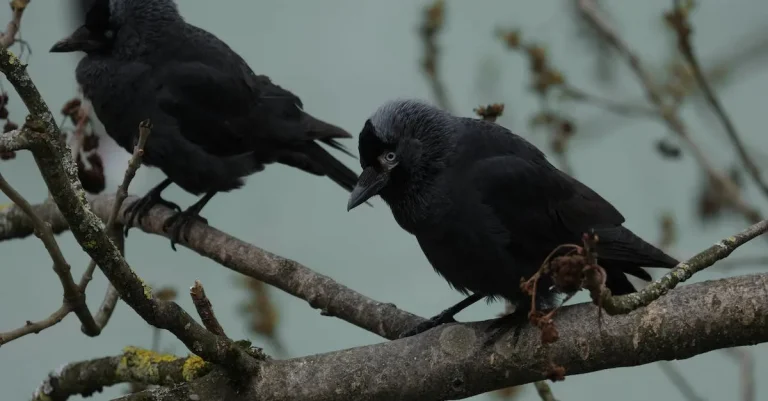Birds chirping is one of those quintessential sounds of nature that can make us feel peaceful and content. But beyond setting a pleasant backdrop, bird vocalizations have meanings that can provide insight into what’s happening around us.
If you’re short on time, here’s the quick answer to your question: Birds chirp and sing for a variety of reasons, from defending their territories to attracting mates. Understanding what certain chirps mean can help birders discern what birds are communicating.
In this comprehensive guide, we’ll explore why birds chirp and sing, the meanings behind different bird vocalizations, how to interpret bird language, and how learning about bird chatter can enrich the birding experience.
Why Do Birds Chirp and Sing?
Birds chirping and singing is a fascinating behavior that serves multiple purposes in their lives. These melodious sounds are not just random noise; they are a form of communication that helps birds navigate their environment and interact with other birds. Here are a few key reasons why birds chirp and sing:
Communicating Territory Boundaries
One of the primary reasons why birds chirp is to establish and defend their territory boundaries. By singing loudly and repetitively, birds are letting other birds know that a particular area is already claimed. This communication helps reduce conflicts and maintain order among birds in a given habitat. It’s like putting up a “No Trespassing” sign in the avian world!
Attracting a Mate
Another important reason why birds chirp and sing is to attract a mate. Male birds often use their vocal abilities to serenade potential partners and demonstrate their fitness. The more complex and melodious the song, the more attractive the male may be to a female bird. This courtship display allows birds to find suitable partners and contribute to the next generation of their species.
Staying in Contact with the Flock
Birds are social creatures, and staying connected with their flock is crucial for their survival. Chirping and singing help birds maintain contact with their flock members, especially when they are flying or foraging in dense vegetation. These vocalizations act as a way to coordinate movements and keep the flock together, ensuring safety and enhancing their collective efficiency.
Expressing Alarm or Excitement
Birds also use their vocalizations to express emotions such as alarm or excitement. When a potential threat is detected, birds may emit alarm calls to warn others in the vicinity. On the other hand, during times of excitement, such as finding a rich food source, birds may burst into a chorus of joyful chirps and songs. These vocal expressions help birds communicate their emotions to their fellow flock members.
Understanding why birds chirp and sing not only adds to our appreciation of their beauty but also provides insights into their complex social lives and survival strategies. So, the next time you hear birds singing in your backyard, take a moment to listen and marvel at the wonderful world of avian communication!
Common Bird Chirps and What They Mean
Birds communicate with each other through a variety of calls and songs. These vocalizations serve different purposes, ranging from attracting mates to warning of potential danger. Understanding the meanings behind common bird chirps can provide valuable insights into the behavior and interactions of these fascinating creatures.
The Dawn Chorus
One of the most extraordinary avian performances is the dawn chorus, which occurs during the early hours of the morning when birds are most vocal. This symphony of chirps, trills, and melodies is primarily a way for birds to establish territories and communicate with potential mates. Each species has its own unique song, allowing experienced birders to identify the different species present in an area.
Chickadee Calls
If you’ve ever heard the distinctive “chick-a-dee-dee-dee” call, you’ve encountered the vocalization of the chickadee. These small, energetic birds use their calls to communicate with their flock members, signaling danger, food sources, or simply keeping in touch. The number of “dees” at the end of the call can vary and may indicate the level of threat perceived by the bird.
Cardinal Songs
The male Northern Cardinal is known for its beautiful, melodic song that can be heard throughout the year. Cardinals use their songs to establish and defend their territories, as well as to attract mates. Their songs are typically a series of clear whistles that vary in length and complexity. Listening to a cardinal’s song can be a delightful experience, adding a touch of nature’s music to any outdoor setting.
Tufted Titmouse Whistles
The tufted titmouse is a small bird with a distinctive call that resembles a whistling “peter-peter-peter.” These vocalizations are used to maintain contact with their flock and establish territories. Titmice are known for their sociability and can often be found in mixed-species foraging flocks, communicating with other birds using their whistling calls.
American Robin Alarm Calls
American robins are known for their loud, sharp alarm calls that sound like “tut-tut-tut.” These calls are used to warn other robins of potential danger, such as the presence of predators or intruders. When a robin spots a threat, it will quickly emit a series of alarm calls to alert nearby individuals. The alarm calls of robins can be quite effective in mobilizing a group defense response.
Understanding the meanings behind these common bird chirps can enhance your appreciation for the intricate communication systems found in the avian world. So, next time you hear a bird chirping, take a moment to listen and observe. You might just uncover a hidden world of messages and melodies.
How to Interpret Bird Language
Tuning In to Bird Vocalizations
Interpreting bird language starts with tuning in to their vocalizations. Birds communicate through a variety of sounds, including chirps, songs, calls, and alarms. By paying attention to these vocalizations, you can start deciphering their messages. For example, a high-pitched trill might indicate a bird’s excitement or happiness, while a series of short, rapid chirps could signal a warning or danger in the area. Take some time to listen to different bird species and familiarize yourself with their unique vocalizations.
Understanding Bird Chatter in Context
Birds not only communicate through their individual vocalizations but also through the context in which they are heard. Factors such as the time of day, season, weather conditions, and the presence of other birds can all influence the meaning behind their chatter. For instance, a chorus of birds singing early in the morning might indicate the start of their daily activities or the marking of territories. By considering the surrounding circumstances, you can gain a deeper understanding of what the birds are trying to convey.
Learning Your Local Birds’ Dialects
Just like humans, birds have regional dialects that can vary from one area to another. By familiarizing yourself with the specific dialects of the bird species in your local area, you can better interpret their language. Websites like All About Birds provide resources and audio recordings to help you identify the different dialects. For example, the song of a Northern Cardinal in the eastern United States may sound different from its western counterpart. By learning these distinctions, you can become more proficient in understanding bird language.
Discerning Specific Meanings and Behaviors
While general interpretations of bird vocalizations can be useful, it is also essential to discern specific meanings and behaviors. For example, a repeated call from a parent bird might indicate that it is feeding its young ones nearby. Pay attention to the body language and actions of the birds as well. Are they flying in a specific pattern or gathering in a particular area? These observations can provide valuable insights into their intentions and behaviors.
Remember, interpreting bird language is a skill that develops over time. The more you immerse yourself in the world of birds, the better you become at understanding their communication. So, grab a pair of binoculars, head out into nature, and start decoding the fascinating language of our feathered friends!
Enriching Your Birdwatching with Bird Chatter Knowledge
When it comes to birdwatching, one of the most fascinating aspects is the opportunity to listen to the birds’ melodious chirping. The sounds they produce serve various purposes and provide valuable insights into their behavior and environment. By understanding the significance of bird chatter, you can elevate your birdwatching experience to a whole new level.
Having Deeper Context for Observations
By familiarizing yourself with the different types of bird chirping, you can gain a deeper context for your observations. For instance, certain sounds might indicate that a bird is communicating with its flock, warning others about potential danger, or defending its territory. This knowledge can help you interpret bird behavior more accurately and make your birdwatching sessions even more rewarding.
Feeling More Connected to Nature
Listening to birds chirping can create a sense of connection to the natural world around you. It allows you to immerse yourself in the peaceful melodies of nature and appreciate the beauty of avian communication. As you become more attuned to the different sounds and their meanings, you’ll develop a stronger bond with the environment and the diverse bird species that inhabit it.
Enhancing Your Bird ID Skills
Being able to identify birds by their unique chirping patterns is a valuable skill for any birdwatcher. By studying the distinct calls and songs of various bird species, you can improve your ability to identify them solely by their vocalizations. This can be particularly useful in situations where visibility may be limited, such as dense vegetation or low-light conditions.
Additionally, learning to recognize specific bird calls can enhance your overall bird ID skills. For example, the unmistakable sound of a red-winged blackbird or the musical trill of a American robin can help you quickly identify these species even from a distance.
To expand your knowledge of bird chatter, consider using resources like All About Birds, a comprehensive website developed by the Cornell Lab of Ornithology. This site offers a vast collection of bird sounds and detailed information about different species, enabling you to learn more about their unique vocalizations and deepen your understanding of bird behavior.
So, the next time you go birdwatching, take a moment to appreciate the symphony of bird chatter around you. By enriching your birdwatching experience with bird chatter knowledge, you’ll gain a greater appreciation for the complexity and beauty of the avian world.
Conclusion
The songs and calls of our feathered friends provide a lively melodic backdrop as we go about our lives. But beyond being musical entertainment, bird chatter conveys a wealth of information to those willing to tune in. Learning about the meanings behind the many trills, chirps, and warbles enhances any birdwatching adventure and deepens our connection to the natural world.






